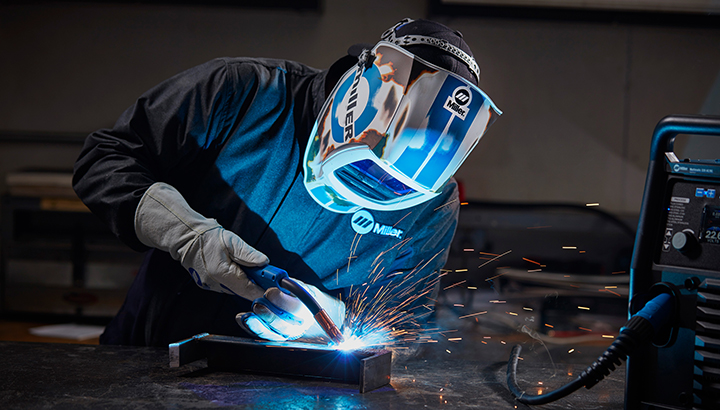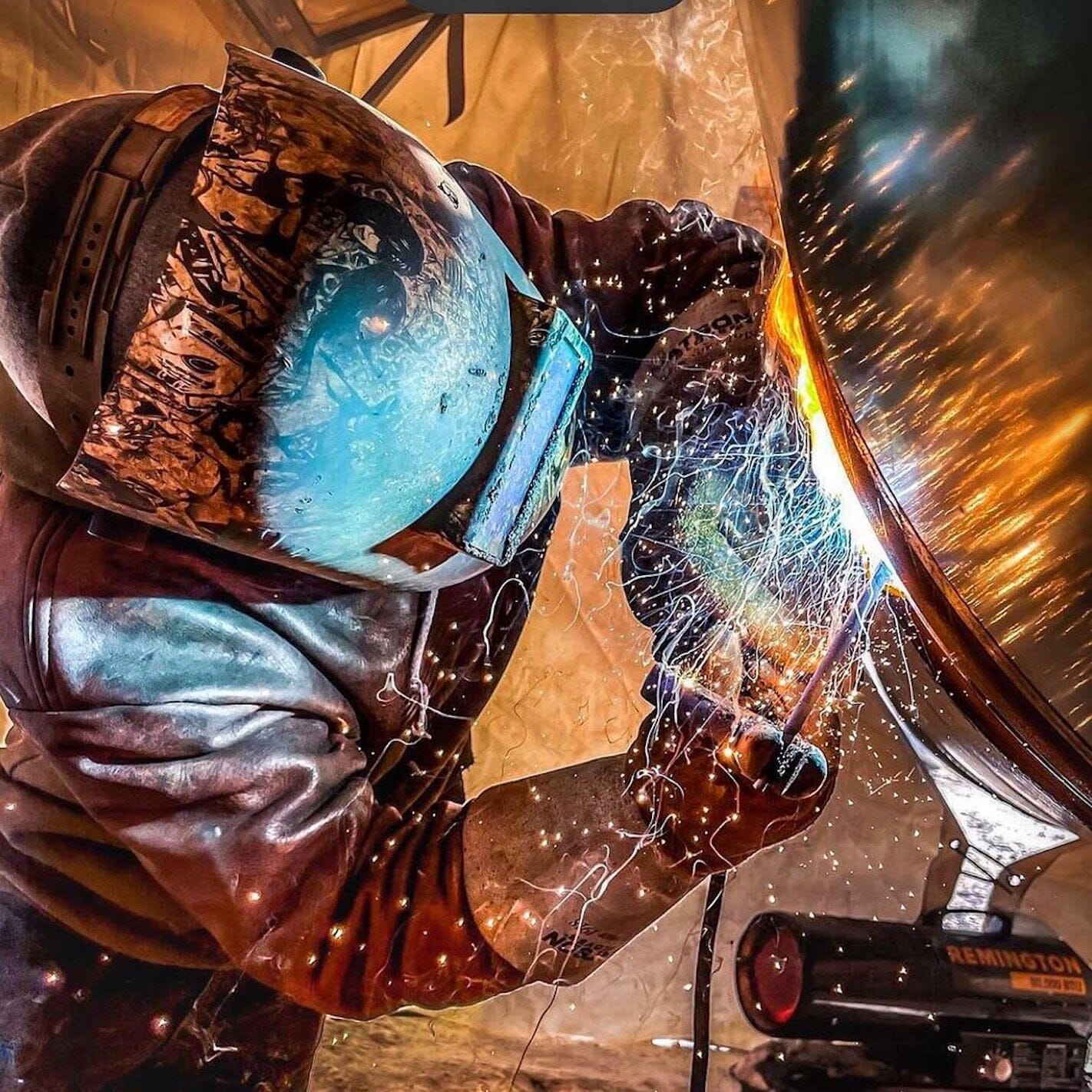Common Welding Repair Service Issues and How to Address Them Successfully
Welding repairs typically encounter an array of problems that can jeopardize the honesty of the final item. Common problems include insufficient penetration, porosity, and misalignment, to name a few. Each problem offers distinct challenges that call for specific approaches for resolution. Comprehending these problems is crucial for welders aiming to boost their end results and skills. This discussion will discover these typical welding repair issues and efficient methods to address them.
Poor Penetration
Inadequate infiltration takes place when the weld metal fails to fully fuse with the base material, causing weak joints and potential structural failures. This issue frequently originates from not enough warm input, wrong electrode angle, or inappropriate welding speed. Welders might experience insufficient penetration due to a mistake of the required specifications for a details product density or kind. Furthermore, contamination on the base product's surface can hinder effective bonding, exacerbating the trouble. To deal with inadequate penetration, welders need to ensure suitable settings on their devices and preserve a clean work surface area. Normal assessment of welds is suggested to identify any kind of shortages early, allowing for prompt adjustments and the avoidance of jeopardized architectural stability in welded settings up.
Porosity
Porosity is an usual problem in bonded joints that materializes as small gas bubbles caught within the weld metal. This problem can compromise the integrity of the weld, causing minimized strength and prospective failure under anxiety. Montana Mobile Welding and Repair Welding. Porosity usually arises from contamination, dampness, or improper welding techniques, which allow gases to run away right into the molten weld swimming pool. To attend to porosity, welders ought to guarantee appropriate surface prep work, preserve a clean working environment, and utilize suitable welding specifications. Additionally, choosing the right filler product and securing gas can alleviate gas entrapment. Normal inspection and screening of welds can assist identify porosity early, ensuring prompt restorative activities are taken, thus protecting the high quality and integrity of the bonded framework
Imbalance
Misalignment in welding can arise from various aspects, consisting of inappropriate setup and thermal expansion. Comprehending the origin is essential for reliable resolution. A number of modification strategies are readily available to realign parts and ensure structural integrity.
Sources of Imbalance
Welding imbalance commonly comes from a range of underlying problems that can jeopardize architectural stability. One primary cause is improper fit-up of parts prior to welding, which can lead to gaps and irregular surface areas. Variations in thermal development throughout the welding process can also result in distortion, particularly if the products being joined have various coefficients of expansion. In addition, inadequate clamping and fixturing may fail to hold components safely in position, causing movement throughout welding. Badly maintained equipment, including welding makers and devices, may present incongruities in the weld bead, more adding to misalignment. Operator error, stemming from not enough training or experience, can additionally play a considerable function in producing misaligned welds.

Modification Strategies Offered
Dealing with imbalance properly requires a mix of rehabilitative methods tailored to the particular concerns at hand. One usual method is the use of components or jigs to hold elements in the appropriate setting during welding, making sure constant placement. Furthermore, preheating the products can help lower distortion and enhance fit-up. For considerable imbalance, mechanical adjustment strategies, such as using hydraulic jacks or clamps, can be employed to remedy the position prior to welding. Post-weld heat treatment might additionally be needed to relieve stress and anxieties brought on by misalignment. Finally, mindful inspection and modification during the configuration stage can prevent misalignment concerns from coming to be substantial issues, promoting a smoother welding procedure and enhancing total architectural stability.
Distortion
Distortion is an usual challenge in welding that can develop from numerous elements, consisting of irregular heating & cooling. Understanding the sources of distortion is vital for implementing effective avoidance methods. Addressing this problem not only improves structural stability yet likewise enhances the overall high quality of the weld.
Root causes of Distortion
When based on the intense warm of welding, materials often undergo modifications that can bring about distortion. This sensation mainly occurs from thermal development and tightening during the welding process. As the weld location warms up, the material broadens; upon air conditioning, it acquires, which can develop inner stress and anxieties. In enhancement, unequal heating throughout a work surface can exacerbate these tensions, click here resulting in warping or flexing. The sort of material additionally plays a considerable role; metals with varying thermal conductivity and coefficients of growth may react differently, leading to unpredictable distortions. Additionally, poor joint layout and inadequate fixturing can add to misalignment during welding, enhancing the likelihood of distortion. Understanding these reasons is vital for reliable welding repair and prevention strategies.
Prevention Techniques
Reliable prevention methods for distortion during welding concentrate on regulating warm input and ensuring correct joint layout. Keeping a consistent warmth input aids to minimize thermal expansion and tightening, which can cause distortion. Making use of techniques such as preheating the work surface can likewise decrease the temperature level gradient, advertising consistent home heating. Furthermore, selecting proper joint designs, such as T-joints or lap joints, can improve security and minimize stress and anxiety focus. Carrying out proper fixturing to protect the workpieces in position better aids in preserving placement during the welding process. Staggered welding sequences can disperse warm extra evenly, protecting against local distortion. By applying these approaches, welders can significantly decrease the chance of distortion and improve the total high quality of their welds.
Breaking
Splitting is a common problem encountered in welding repair services, typically resulting from different factors such as improper cooling prices, material selection, or insufficient joint preparation. The event of fractures can greatly compromise the integrity of the weld, leading to possible failures throughout procedure. To address this problem, welders must first assess the root creates, guaranteeing that products are suitable and properly picked for the details application. In addition, controlling the air conditioning price during the welding process is essential; fast air conditioning can cause anxiety and lead to breaking. Appropriate joint layout and prep work likewise contribute to lessening the danger. Applying these methods can improve weld quality and toughness, inevitably decreasing the probability of fracturing in finished weldments.

Insufficient Blend
A considerable concern in welding fixings is incomplete blend, which happens when the weld steel does not adequately bond with the base product or previous weld passes - Belgrade Welding. This problem can result in weak points in the joint, potentially jeopardizing the honesty of the welded structure. Elements contributing to incomplete combination include not enough heat input, inappropriate welding technique, and contamination of the surface areas being signed up with. To resolve this problem efficiently, welders must assure appropriate pre-weld cleansing and surface preparation, along with readjust their welding criteria to achieve sufficient penetration and blend. Normal assessment throughout the welding procedure can also assist identify insufficient fusion early, permitting timely corrective measures to boost the total top quality of the weld
Overheating
While welding repair work can improve architectural honesty, overheating offers a considerable challenge that can bring about product destruction. Too much warm during welding can alter the mechanical buildings of steels, resulting in minimized toughness, increased brittleness, and bending. This sensation is specifically important in high-stress applications where structural integrity is extremely important. Determining overheating can entail visual assessments for discoloration or distortion, in addition to checking temperature level during the welding process. To alleviate the dangers associated with getting too hot, welders need to employ proper strategies, such as managing warmth input, adjusting travel speed, and using appropriate filler materials. Furthermore, implementing pre- and post-weld warmth treatments can assist recover product homes and enhance the overall quality of the fixing, making certain lasting efficiency and safety.
Regularly Asked Concerns
What Are the Common Indications of a Welding Issue?

Exactly How Can I Examine My Welds for Quality?
To examine welds for top quality, one can utilize aesthetic assessments, ultrasonic screening, and radiographic techniques. Each technique guarantees architectural honesty, recognizes issues, and validates adherence to specified requirements, ultimately boosting the reliability of the welded joints.
What Safety and security Preventative Measures Should I Take While Welding?
When welding, one should focus on safety by putting on ideal individual safety devices, guaranteeing correct air flow, safeguarding flammable materials away, preserving a tidy work space, and knowing environments to avoid crashes and injuries.
Can I Fix a Weld Without Remodeling the Entire Joint?
Fixing a weld without redoing the entire joint is possible, depending upon the damage (Montana Mobile Welding and Repair Fabrication). Techniques such as grinding, including filler material, or utilizing a welding procedure can properly deal with certain imperfections while preserving the surrounding framework
What Equipment Are Crucial for Efficient Welding Fixes?
Vital devices for efficient welding repairs include a welding maker, cord brush, grinder, protective equipment, clamps, and filler materials. Each tool plays an essential role in making sure top quality and safety during the repair service procedure. Porosity normally emerges from contamination, wetness, or improper welding methods, which permit gases to escape into the liquified weld swimming pool. Inadequately conserved tools, including welding machines and devices, might introduce variances in the weld grain, further contributing to misalignment. When subjected to the extreme heat of welding, products typically undertake modifications that can lead to distortion. Splitting is an usual problem encountered in welding repair work, usually resulting from different aspects such as improper cooling rates, product option, or insufficient joint preparation. A significant problem in welding repair services is incomplete fusion, which happens when the weld metal does not sufficiently bond with the base product or previous weld passes.